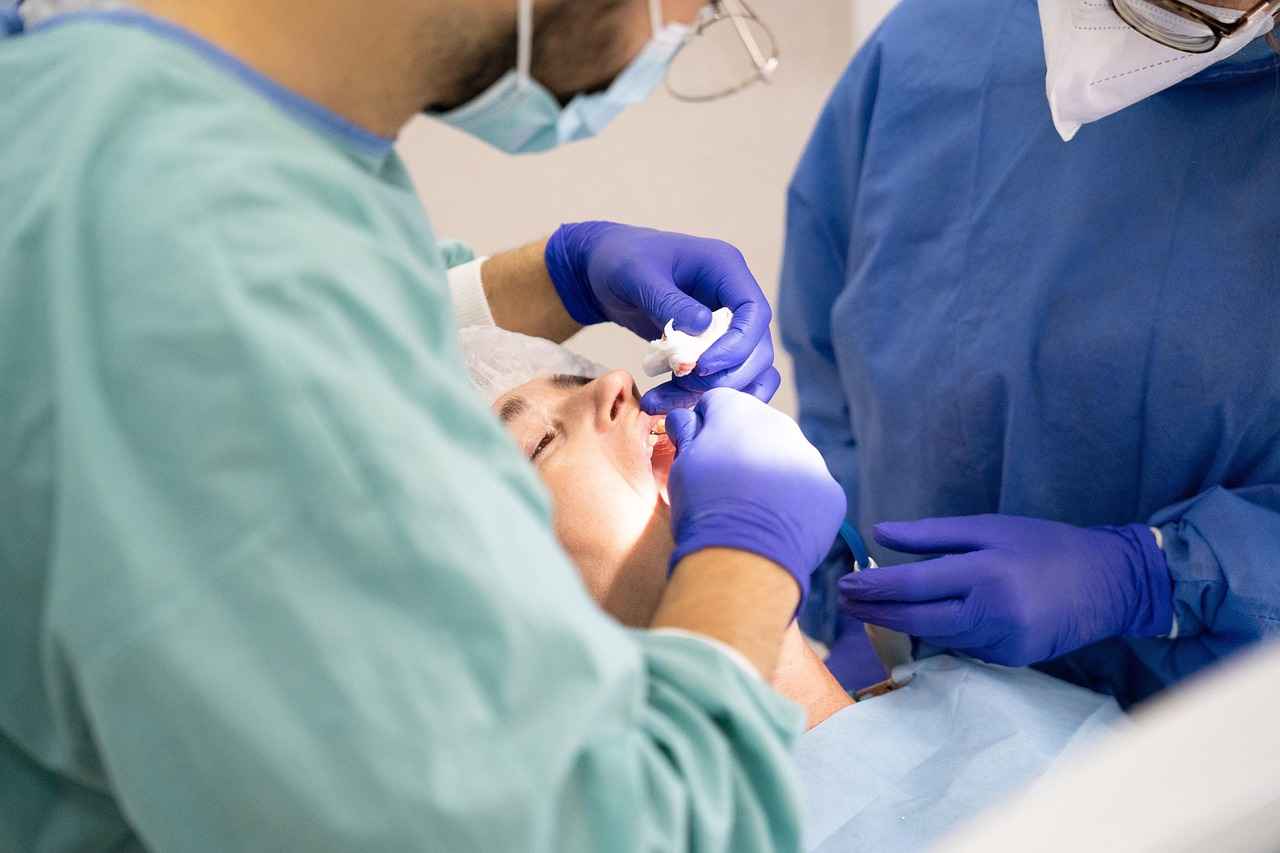This article delves into the costs associated with fixing a cracked tooth, the various treatment options available, and affordable solutions that can help you maintain your dental health without straining your finances.
Understanding the causes of cracked teeth is essential for prevention and effective treatment. Common factors include:
- Trauma: Accidents or injuries can lead to cracks.
- Grinding: Chronic teeth grinding, or bruxism, places excessive pressure on teeth.
- Dental Decay: Cavities can weaken tooth structure, making them more susceptible to cracking.
Identifying the symptoms of a cracked tooth is crucial for timely intervention. Symptoms often include:
- Pain while chewing: Discomfort when biting down can indicate a problem.
- Sensitivity: Increased sensitivity to hot or cold temperatures.
- Visible cracks: Sometimes, cracks can be seen on the tooth surface.
There are several treatment options available, each varying in cost and effectiveness:
- Dental Bonding: This is a quick and cost-effective solution for minor cracks. A tooth-colored resin is applied to restore the tooth’s appearance.
- Crowns: For more severe cracks, dental crowns are often necessary. These provide strength and protection but come with a higher cost.
- Root Canals: If the crack extends into the pulp, a root canal may be required, followed by a crown.
The cost of fixing a cracked tooth can vary significantly based on the treatment type and location. On average:
- Dental bonding: $100 to $600
- Crowns: $800 to $1,500
- Root canals: $700 to $1,500
Insurance coverage can also play a significant role in determining out-of-pocket expenses.
Several factors influence the cost of treatment, such as:
- Dentist’s experience: More experienced dentists may charge higher fees.
- Geographic location: Prices can vary based on the cost of living in different areas.
- Complexity of the case: More complicated cases may require additional procedures, increasing overall costs.
Finding affordable solutions for dental care is essential for many individuals. Consider these options:
- Dental Insurance: Many plans cover a portion of the costs for treating cracked teeth.
- Payment Plans: Many dental offices offer financing options, making treatments more manageable.
- Community Health Resources: Clinics often provide services at reduced rates for those without insurance.
In summary, understanding the costs and treatment options for cracked teeth can empower you to make informed decisions about your dental health. By exploring affordable solutions, you can maintain your smile without financial strain.

What Are the Common Causes of Cracked Teeth?
Understanding the common causes of cracked teeth is essential for effective prevention and treatment. Cracked teeth can lead to significant discomfort and may require various dental interventions. By identifying the factors that contribute to this dental issue, individuals can take proactive measures to protect their oral health.
- Trauma: Physical injuries to the mouth can cause teeth to crack. This can occur from sports accidents, falls, or even biting down on hard objects. Trauma can lead to fractures that compromise the integrity of the tooth.
- Bruxism: Grinding or clenching teeth, often due to stress or misaligned teeth, can exert excessive pressure on the enamel. Over time, this can result in cracks or chips, making it important to address bruxism early.
- Dental Decay: Cavities can weaken the structure of a tooth. When a tooth is compromised by decay, it is more susceptible to cracking under pressure. Regular dental check-ups can help identify and treat decay before it leads to more severe issues.
- Temperature Changes: Rapid changes in temperature, such as consuming hot and cold foods or beverages in quick succession, can cause the tooth material to expand and contract. This stress can lead to cracks over time.
- Age: As individuals age, their teeth may become more brittle due to wear and tear. Older adults are often more susceptible to cracked teeth, highlighting the importance of maintaining dental health throughout life.
- Large Fillings: Teeth that have undergone significant restorative work, such as large fillings, may be more prone to cracking. The difference in material properties between the filling and the natural tooth can create stress points.
Recognizing these factors is the first step in preventing cracked teeth. Individuals should be mindful of their dental habits and consider protective measures, such as wearing a mouthguard during sports or managing stress to reduce grinding.
Additionally, maintaining good oral hygiene and scheduling regular dental visits can help catch potential issues early, preventing more serious complications. If you suspect you have a cracked tooth, it is crucial to seek dental care promptly to avoid further damage and ensure appropriate treatment.
By understanding the underlying causes of cracked teeth, individuals can take informed steps towards prevention and care, ultimately maintaining their dental health and avoiding costly treatments.

What Are the Symptoms of a Cracked Tooth?
Understanding the symptoms of a cracked tooth is vital for ensuring prompt treatment and avoiding further complications. A cracked tooth can lead to significant discomfort and potential dental issues if not addressed quickly. Here, we will delve deeper into the signs to watch for, as well as their implications.
- Pain While Chewing: One of the most common symptoms is experiencing sharp pain when biting down or chewing. This discomfort may come and go, often depending on the pressure applied to the tooth.
- Sensitivity to Temperature: Individuals may notice heightened sensitivity to hot or cold foods and beverages. This sensitivity can be a result of the crack exposing the inner layers of the tooth.
- Visible Cracks: In some cases, the crack may be visible on the tooth surface. A hairline fracture might not be easily noticeable, but larger cracks can be seen without the need for specialized equipment.
- Swelling and Gum Irritation: The area surrounding the cracked tooth may become inflamed or irritated, sometimes leading to gum swelling. This can indicate that the crack has affected the surrounding tissues.
- Tooth Discoloration: A cracked tooth may also present with discoloration or darkening of the tooth. This change in color can be a sign that the tooth is compromised.
- Pain During Temperature Changes: Some individuals may experience pain when exposed to temperature changes, such as moving from a cold environment to a warm one. This sensitivity can be an indicator of a deeper issue.
- Difficulty in Identifying the Source of Pain: Sometimes, individuals might feel pain that seems to originate from multiple teeth, making it challenging to pinpoint the exact source. This can be particularly frustrating and may require professional assessment.
If you notice any of these symptoms, it is crucial to consult a dental professional as soon as possible. Early detection and treatment can prevent further damage and more extensive procedures. The longer a cracked tooth goes untreated, the higher the risk of complications such as infections or tooth loss.
In summary, being aware of the symptoms associated with a cracked tooth is essential for maintaining your oral health. Regular dental check-ups and immediate attention to any discomfort can help ensure that your teeth remain healthy and functional.

What Are the Treatment Options for a Cracked Tooth?
When it comes to dental health, a cracked tooth can be a significant concern. Fortunately, there are several treatment options available that cater to different severities of cracks. Understanding these options is crucial for making informed decisions about your dental care.
Cracked teeth can result from various factors, including trauma, grinding, or even natural wear and tear. Depending on the extent of the crack, treatment options can range from conservative approaches to more invasive procedures. Here’s a detailed look at the various treatments available:
- Dental Bonding: This is often the first line of defense for minor cracks. Dental bonding involves applying a tooth-colored resin to the cracked area, which not only restores the tooth’s appearance but also enhances its function. The procedure is quick, typically costing between $100 and $600.
- Crowns: For more severe cracks, a dental crown may be necessary. Crowns encase the entire tooth, providing strength and protection. While they are effective, they are also more expensive, with costs ranging from $800 to $1,500.
- Root Canal Therapy: If the crack extends into the tooth’s pulp, a root canal may be required. This procedure involves removing the damaged pulp and sealing the tooth. While it can be more invasive, it is essential for preserving the tooth and preventing further complications. Costs can vary widely based on location and complexity.
- Extraction: In cases where the crack is beyond repair, extraction may be the only option. This is the most invasive and costly treatment, but it may be necessary to prevent further dental issues.
Each treatment option has its own benefits and drawbacks, and the choice largely depends on the severity of the crack and the overall health of the tooth.
Choosing the right treatment for a cracked tooth involves several considerations:
- Severity of the Crack: Minor cracks may only require bonding, while more severe cracks may necessitate crowns or even extraction.
- Cost: It’s essential to evaluate your budget and consider dental insurance coverage, which can significantly reduce out-of-pocket expenses.
- Long-term Health: Some treatments may offer better longevity and health benefits than others, influencing your decision.
Consulting with a dental professional is vital to determine the most suitable treatment plan tailored to your specific needs.
Ignoring a cracked tooth can lead to severe complications, including:
- Pain: As the crack worsens, you may experience increasing pain while chewing or sensitivity to temperature.
- Infection: Cracks can provide an entry point for bacteria, leading to infections that may require more extensive treatment.
- Tooth Loss: In severe cases, neglecting treatment can result in the need for extraction, leading to additional costs and complications.
In summary, understanding the various treatment options for a cracked tooth is crucial for maintaining dental health. Early intervention can save you from more severe issues down the line. Always consult with a dental professional to explore the best solutions tailored to your situation.
Dental Bonding
is an effective and economical solution for addressing minor dental imperfections, particularly cracked teeth. This procedure is not only quick but also offers a seamless way to restore the natural appearance of your teeth.
involves the application of a tooth-colored resin to the affected area of the tooth. This resin is carefully sculpted to match the surrounding teeth, ensuring a natural look. The process typically takes about 30 to 60 minutes per tooth, making it a convenient option for those with busy schedules.
- Cost-Effective: Compared to other dental procedures like crowns or veneers, dental bonding is significantly less expensive, often ranging from $100 to $600.
- Quick Procedure: The entire process can often be completed in a single visit, making it ideal for those seeking immediate results.
- Minimal Tooth Alteration: Unlike crowns, bonding requires little to no alteration of the original tooth structure, preserving its integrity.
- Versatility: Dental bonding can be used for various issues, including cracks, chips, gaps, and even discoloration.
The dental bonding process typically involves several steps:
- Preparation: The dentist will begin by selecting a resin color that closely matches your natural teeth.
- Tooth Surface Preparation: The tooth surface is slightly roughened to help the bonding material adhere better.
- Application: The resin is applied to the tooth and shaped to achieve a natural appearance.
- Curing: A special light is used to harden the resin, ensuring it bonds securely to the tooth.
- Final Adjustments: The dentist will make any necessary adjustments to ensure the bite feels comfortable and natural.
Aside from its affordability and quick application, dental bonding offers several other benefits:
- Enhances Aesthetics: Bonding can significantly improve the appearance of your smile, boosting your confidence.
- Durability: With proper care, bonded teeth can last several years, making it a practical choice for many patients.
- Easy Maintenance: Maintaining bonded teeth is as simple as caring for your natural teeth with regular brushing and flossing.
While dental bonding has many advantages, it’s essential to consider some potential drawbacks:
- Staining: The resin used in bonding can stain over time, especially if exposed to foods and drinks that cause discoloration.
- Less Durable Than Other Options: While bonding is durable, it may not be as strong as crowns or veneers, particularly for those who grind their teeth.
- Not Ideal for Severe Cracks: For more extensive damage, other treatments like crowns may be more appropriate.
In conclusion, dental bonding is a valuable solution for those dealing with minor cracks and imperfections in their teeth. Its affordability and quick application make it an attractive option for many patients. If you’re considering this treatment, consult with your dentist to determine if dental bonding is the right choice for your dental health needs.
Crowns and Caps
are essential dental restorations designed to address more severe cases of tooth damage, particularly when a tooth has suffered significant cracking. These treatments not only restore the tooth’s functionality but also enhance its appearance, making them a popular choice among patients seeking both aesthetic and practical solutions.
When a tooth is cracked, it can lead to a variety of complications if not treated promptly. The severity of the crack often dictates the type of restoration required. In cases where the tooth structure is compromised, dental crowns or caps become necessary. These devices encase the entire tooth, providing a protective layer that can withstand the forces of chewing and biting.
One of the primary advantages of crowns and caps is their ability to restore strength to a weakened tooth. Made from materials such as porcelain, metal, or a combination of both, they are designed to mimic the appearance and function of natural teeth. This is particularly important for teeth that are visible when smiling, as patients often prefer a restoration that blends seamlessly with their existing dentition.
However, it is essential to note that crowns and caps come with a higher price tag compared to simpler treatments like dental bonding. The cost of a crown can range from $800 to $1,500, depending on various factors such as the material used, the dentist’s experience, and the geographical location of the dental practice. While this may seem steep, it is crucial to consider the long-term benefits of investing in a durable restoration that can prevent further damage and the need for more extensive procedures in the future.
In addition to their protective qualities, crowns and caps can also play a significant role in maintaining overall dental health. By covering a cracked tooth, these restorations help to prevent bacteria from entering the tooth and causing infection. This is particularly important for patients who may be at risk for dental decay or other oral health issues.
Before proceeding with a crown or cap, a thorough examination by a dental professional is necessary. The dentist will assess the extent of the crack and determine the most appropriate treatment plan. In some cases, root canal therapy may be required before placing a crown to ensure the tooth is healthy and free of infection.
For patients concerned about the cost, it’s worth exploring affordable solutions. Many dental practices offer payment plans or financing options to help manage the expense of crowns and caps. Additionally, dental insurance may cover a portion of the costs, depending on the policy and the specific treatment required.
In summary, while crowns and caps are a more expensive option for treating cracked teeth, they offer significant benefits in terms of strength, protection, and aesthetic appeal. Investing in these restorations can lead to improved oral health and a more confident smile, making them a worthwhile consideration for anyone facing severe tooth damage.

How Much Does It Cost to Fix a Cracked Tooth?
When it comes to dental health, one of the most common concerns is the cost associated with treatments. Understanding how much it costs to fix a cracked tooth is essential for effective budgeting and planning for dental care. This article delves into the various aspects of cracked tooth treatment costs, helping you make informed decisions.
The cost of fixing a cracked tooth can vary significantly based on several factors, including the type of treatment required and the geographical location of the dental practice. On average, patients can expect to pay anywhere from $100 to $1,500 for treatment, depending on the severity of the crack and the chosen method of repair.
Different treatment options are available, each with its associated costs. Here are some common treatments:
- Dental Bonding: This is a quick and cost-effective solution for minor cracks. The average cost ranges from $100 to $600, making it an attractive option for many.
- Crowns: For more severe cracks, dental crowns are often necessary. The cost for crowns typically ranges from $800 to $1,500. While pricier, they provide significant protection and durability.
- Root Canal Therapy: If the crack extends into the tooth’s pulp, a root canal may be required. This procedure can cost between $700 and $1,500, depending on the complexity.
Several factors can influence the overall cost of treating a cracked tooth:
- Geographic Location: Dental care costs can vary widely depending on where you live. Urban areas may have higher prices compared to rural locations.
- Dentist’s Experience: A highly experienced dentist may charge more for their services, but their expertise can lead to better outcomes.
- Severity of the Crack: The more complicated the crack, the higher the treatment cost. Simple cracks may require less invasive and cheaper treatments, while complex cases may necessitate more extensive procedures.
Many individuals worry about the financial burden of dental treatments. Fortunately, there are several ways to make dental care more affordable:
- Dental Insurance: Many plans cover a portion of the costs associated with treating cracked teeth. Reviewing your policy can help you understand your potential out-of-pocket expenses.
- Payment Plans: Many dental offices offer flexible payment plans to help patients manage the costs of treatment over time.
- Community Health Clinics: These clinics often provide dental services at reduced rates, making them a valuable resource for those without insurance or facing financial difficulties.
In conclusion, understanding the costs associated with fixing a cracked tooth is crucial for effective dental care management. With various treatment options available and several ways to mitigate costs, maintaining your dental health is within reach. Always consult with your dentist to explore the best treatment plan tailored to your specific needs and budget.
Average Costs of Common Treatments
When it comes to dental care, understanding the average costs of common treatments for a cracked tooth is essential for effective budgeting and decision-making. This section will delve into the financial aspects of two popular treatments: dental bonding and crowns.
On average, dental bonding can range from $100 to $600, making it one of the more affordable options for minor cracks. This procedure involves the application of a tooth-colored resin, which is molded to restore the tooth’s appearance and functionality. It is particularly beneficial for small chips or cracks and can often be completed in a single visit.
In contrast, crowns typically cost between $800 and $1,500. This treatment is necessary for more severe cracks that compromise the tooth’s structural integrity. A crown encases the entire tooth, providing strength and protection against further damage. The higher cost reflects the materials used and the complexity of the procedure, which may require multiple visits.
It is important to note that the final out-of-pocket expenses can vary based on several factors:
- Geographic Location: Dental fees can differ significantly depending on the region and local market conditions.
- Dentist’s Experience: Highly experienced dentists may charge more for their expertise and advanced techniques.
- Insurance Coverage: Many dental insurance plans cover a portion of the costs associated with these treatments, which can significantly reduce the financial burden on patients.
Furthermore, it is advisable to consult with your dentist about payment plans or financing options that may be available. Many dental practices provide flexible payment solutions to help manage costs effectively.
Understanding your dental insurance coverage is crucial when considering treatment for a cracked tooth. Many plans cover a percentage of the costs for both dental bonding and crowns, but the specifics can vary widely. It is recommended to review your policy and discuss with your insurance provider to determine what is covered.
In cases where insurance does not fully cover the treatment, patients may still have options. Payment plans offered by dental offices can help spread the cost over several months, making it more manageable. Additionally, some clinics offer discounts for upfront payments or for patients without insurance.
For individuals facing financial hardships, community health clinics can be a valuable resource. These clinics often provide dental services at reduced rates, allowing access to necessary treatments without the high costs typically associated with private practices. It’s worth researching local community health resources to find affordable dental care options.
In summary, understanding the average costs of dental bonding and crowns is vital for anyone seeking treatment for a cracked tooth. By being informed about potential expenses and available financial options, patients can make educated decisions that best suit their dental health needs and budgets.
Factors Influencing Treatment Costs
When it comes to dental care, particularly for issues like a cracked tooth, understanding the is essential for making informed decisions. The cost of fixing a cracked tooth can vary significantly based on several key elements. Let’s explore these factors in detail.
The experience of the dentist plays a crucial role in determining treatment costs. More experienced dentists may charge higher fees due to their advanced skills, specialized training, and reputation. Patients often prefer seasoned professionals for complex cases, which can lead to higher overall costs. However, it’s important to balance experience with affordability, as less experienced dentists may offer competitive rates without compromising on care quality.
Your geographic location can significantly impact the cost of dental treatments. Urban areas typically have higher living costs, which can translate to increased dental fees. In contrast, rural areas might offer more affordable options due to lower overhead costs. Additionally, local competition among dental practices can also influence pricing. It’s advisable to research dental costs in your area and consider traveling to a nearby town if it means substantial savings.
The complexity of the dental issue is another critical factor that affects treatment costs. A simple crack may require minimal intervention, such as dental bonding, which is relatively inexpensive. However, more severe cracks may necessitate extensive treatments like crowns or root canals, leading to higher expenses. Dentists will often evaluate the specific condition of the tooth and recommend the most appropriate treatment, which can vary widely in cost.
The type of treatment required for a cracked tooth also influences costs. Options range from conservative treatments like dental bonding to more invasive procedures such as crowns or even tooth extractions in extreme cases. Each of these treatments comes with its own price range, and understanding these differences can help patients make better financial decisions regarding their dental care.
Having dental insurance can significantly reduce out-of-pocket expenses for treatments. However, coverage varies widely among plans, with some covering only a portion of the costs. It’s essential to check with your insurance provider to understand what treatments are covered and how much you will need to pay out of pocket. If you don’t have insurance, inquire about payment plans or financing options that can help spread the cost over time.
Finally, patients should consider additional costs associated with dental treatment. These can include diagnostic procedures like X-rays, follow-up visits, and medications for pain management. Being aware of these potential expenses can help individuals budget more effectively for their dental care.
In summary, understanding the various factors influencing the cost of cracked tooth treatments can empower patients to make informed choices. From the dentist’s experience to geographic location and treatment complexity, each element plays a vital role in determining overall expenses. By considering these factors and exploring available options, individuals can maintain their dental health without compromising their financial stability.

Are There Affordable Solutions for Dental Care?
Access to affordable dental care is a significant concern for many individuals. Navigating the world of dental expenses can be challenging, especially when unexpected issues arise, such as a cracked tooth. Fortunately, there are numerous options available to help alleviate the financial burden associated with dental treatments.
Dental health is an essential part of overall well-being, and maintaining it should not be a privilege reserved for those with deep pockets. Affordable dental care ensures that everyone has access to necessary treatments, promoting better health outcomes and quality of life. Here are some avenues to explore:
- Dental Insurance: Many individuals rely on dental insurance to help cover the costs of treatments. It’s crucial to choose a plan that aligns with your needs, as coverage can vary significantly.
- Payment Plans: Many dental offices offer flexible payment plans that allow patients to pay for treatments over time. This can make it easier to manage expenses without sacrificing necessary care.
- Community Health Programs: Community health clinics often provide dental services at reduced rates or on a sliding scale based on income. These programs are particularly beneficial for uninsured individuals.
- Dental Schools: Dental schools frequently offer services performed by students under the supervision of experienced faculty at a fraction of the cost. This option can provide quality care while also supporting the education of future dentists.
To make the most of your dental coverage, consider the following strategies:
- Understand Your Policy: Familiarize yourself with the details of your dental insurance plan, including coverage limits, exclusions, and co-pays.
- Schedule Regular Check-ups: Preventive care is often fully covered by dental insurance. Regular visits can help catch issues early, potentially saving you money in the long run.
- Ask About Discounts: Some dental offices offer discounts for upfront payments or for patients without insurance. It’s worth inquiring about these options.
Community health resources play a vital role in providing affordable dental care. These clinics often cater to low-income families and individuals, ensuring that no one has to forgo necessary treatments due to financial constraints. Services may include:
- Basic Dental Care: Cleanings, exams, and basic restorative procedures are typically offered at lower costs.
- Preventive Education: Many clinics provide education on oral hygiene and preventive practices, empowering patients to maintain their dental health.
- Access to Specialists: Some community health programs also offer referrals to specialists for more complex dental issues at reduced rates.
In addition to the options mentioned, there are several resources available that can assist individuals in finding affordable dental care:
- Non-Profit Organizations: Organizations such as the National Association of Free and Charitable Clinics can connect patients with local services.
- State Programs: Many states have programs designed to provide dental care for low-income residents. Check with your state’s health department for more information.
- Online Directories: Websites like DentalPlans.com offer comparisons of dental savings plans that can help reduce costs.
In conclusion, while the cost of dental care can be daunting, there are numerous affordable solutions available. By exploring options such as dental insurance, payment plans, community health resources, and more, individuals can ensure they receive the necessary care without financial strain. Staying informed and proactive about dental health is key to maintaining a healthy smile.
Dental Insurance and Payment Plans
Dental Insurance plays a crucial role in making dental treatments more accessible and affordable for individuals facing dental issues, including cracked teeth. Many dental insurance plans are designed to cover a significant portion of the costs associated with various treatments for cracked teeth. This coverage can significantly alleviate the financial burden on patients, allowing them to seek timely care without the stress of overwhelming expenses.
Understanding the specifics of your dental insurance policy is essential. Most plans typically cover diagnostic services such as X-rays and examinations, which are necessary to assess the severity of the crack. Additionally, treatments like dental bonding or crowns may also fall under the coverage umbrella, depending on the plan. It is advisable for patients to consult with their insurance provider to determine the exact coverage details and any limitations that may apply.
Payment Plans offered by dental offices are another valuable option for managing the costs associated with dental treatments. Many practices understand that dental care can be a significant financial burden, and thus, they provide flexible payment options. These plans allow patients to spread the cost of treatment over several months, making it easier to manage payments without compromising their dental health.
When considering a payment plan, it is important to inquire about the terms and conditions. Some dental offices may offer interest-free financing, while others might charge interest. Patients should carefully evaluate their options to choose a plan that best fits their financial situation.
Furthermore, some dental offices partner with third-party financing companies that specialize in healthcare costs. These companies can provide patients with loans specifically for dental treatments, which can be paid back over time. This can be particularly beneficial for those who may not have insurance or whose insurance does not cover certain procedures.
In addition to insurance and payment plans, community health resources can offer further assistance. Many communities have clinics that provide dental services at reduced rates, especially for low-income individuals or those without insurance. These clinics often operate on a sliding scale based on income, making dental care more accessible to those in need.
Ultimately, whether through insurance, payment plans, or community resources, there are numerous options available to help individuals manage the costs of treating cracked teeth. By exploring these avenues, patients can ensure they receive the necessary care while maintaining their financial stability.
- Understand Your Insurance: Review your dental insurance policy carefully to know what is covered.
- Ask About Payment Plans: Inquire with your dental office about available financing options.
- Explore Community Resources: Look for local clinics that provide affordable dental care.
Taking proactive steps to understand and utilize these options can make a significant difference in how effectively individuals address their dental health needs.
Community Health Resources
Access to dental care can be a significant concern for many, especially for those who lack insurance or face financial difficulties. Community health clinics play a vital role in bridging this gap by offering affordable dental services to individuals in need. These clinics are often funded by government programs and nonprofit organizations, allowing them to provide essential care at reduced rates.
Community health clinics typically provide a range of dental services, including:
- Routine check-ups and cleanings
- Fillings for cavities
- Extractions for damaged teeth
- Dental sealants to protect against decay
- Emergency dental care for urgent issues
These clinics are especially beneficial for:
- Individuals without dental insurance
- Low-income families
- Senior citizens on fixed incomes
- Students and young adults
Community health clinics often implement a sliding fee scale based on income. This means that patients only pay what they can afford, making dental care accessible to everyone. For example, a patient earning a lower income may only pay a nominal fee for services that would typically cost hundreds of dollars at a private practice.
In addition to community health clinics, there are other resources available to help individuals access dental care:
- Dental schools: Many dental schools offer reduced-cost services performed by students under the supervision of experienced faculty.
- Nonprofit organizations: Various nonprofits provide free or low-cost dental care events, particularly in underserved areas.
- Government programs: Programs like Medicaid often cover dental services for eligible individuals.
Finding a community health clinic is relatively simple. You can:
- Visit the Health Resources and Services Administration (HRSA) website
- Contact local health departments
- Search online for community health resources in your area
In summary, community health clinics are a crucial resource for those seeking affordable dental care. By offering a variety of services at reduced costs, they help individuals maintain their dental health without the burden of high expenses. Whether you are facing financial hardships or simply need a check-up, these clinics can provide the support you need.
Frequently Asked Questions
- What should I do if I suspect I have a cracked tooth?
If you think you have a cracked tooth, it’s important to see a dentist as soon as possible. Early diagnosis can prevent further damage and more expensive treatments. Until your appointment, avoid chewing on that side and consider taking over-the-counter pain relief if you’re uncomfortable.
- How can I prevent cracked teeth in the future?
Preventing cracked teeth involves a few simple habits. Always wear a mouthguard if you grind your teeth at night or play contact sports. Also, be mindful of chewing on hard objects, like ice or hard candies, which can put unnecessary stress on your teeth.
- Are there any home remedies for cracked teeth?
While home remedies can’t fix a cracked tooth, they can help manage discomfort temporarily. Rinsing your mouth with warm salt water can reduce inflammation, and applying a cold compress to your cheek can help with swelling. However, these are just stop-gap measures until you can see a dentist.
- Will dental insurance cover the cost of fixing a cracked tooth?
Many dental insurance plans do cover a portion of the costs associated with treating cracked teeth, but coverage can vary widely. It’s best to check with your insurance provider to understand what treatments are covered and what your out-of-pocket expenses might be.




